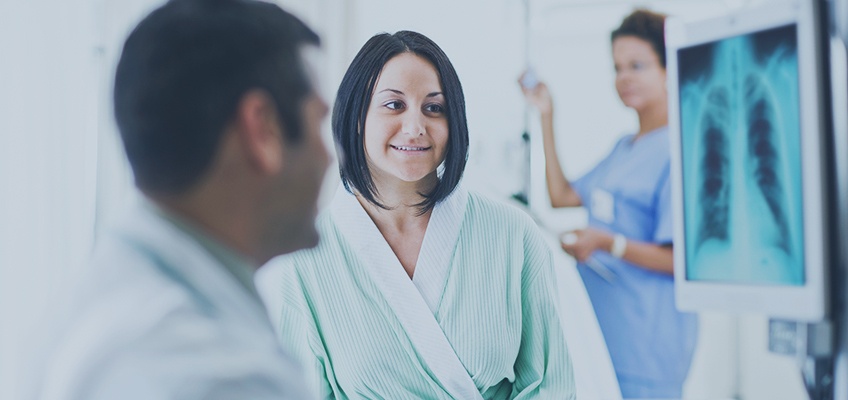Lung Cancer Screenings Using Low Dose CT Scans
Prevention is The Best Cure
If you smoke, you need to quit.
We have a smoking cessation program here at Chesapeake Regional. You can meet with a therapist one on one and she can tailor the program just for you. All you have to do is call (757) 312-5256.
Alternatively, you can call 1 (800) Quit-Now where counselors can provide you with important information, advice and support.
We also have smokefree.gov. They have many tools and tips to help you.
The point is all you have to do is make the call. For those of you have already quit, good for you!
So, why do we have to screen for lung cancer?
Screening for lung cancer increases the chance of us detecting the disease early, when its most treatable and potentially curable. The thing about lung cancer is, by the time you start feeling something isn't right, it could be too late.
Lung cancer kills more people than colon, breast and prostate cancer combined.
Does it matter if we catch it early?
Of course it does! By doing these yearly CT scans, we save 20% more people. That's about 30,000 fewer deaths from lung cancer, per year, in the US.
You might ask, "Why a CT scan? I had chest x-rays before and they were ok!" Unfortunately, chest x rays don't catch lung cancer early. They are not effective.
What is a low dose CT scan?
It's a special type of cat scan with less radiation than a regular CT scan. It only takes a few minutes, and the entire appointment will be about 30 minutes.
Is the screening a "one and done" procedure?
Lung cancer screening is not a single test, but a process that needs to be done correctly. Here at Chesapeake Regional, we have everything in place to help guide you. A board certified radiologist will read your scan. If there's something to be discussed, a group of lung specialists will review your scan together to determine the best recommendation for treatment.
So remember, even if you have a clean scan this year you must stay with the program and continue to be screened yearly for as long as you are eligible.
What happens after a CT scan?
If the CT scan is clean, you're good to go for a year!
If we find a lung nodule, your doctor may recommend another CT scan or another procedure for follow-up.
Is the screening harmful?
There are some potential risks with lung cancer screenings. However, you need to understand the process. We think it's a good idea, but it's up to you in the end.
What are the risks associated with a lung cancer screening?
Let me explain, this test uses a low dose of radiation which will expose you to less than 1.5 milliSievert (mSv). This is much less radiation than a conventional chest CT scan, which would expose you to 7 - 10 mSv. To put this in perspective, the average person in the US is exposed to approximately 3 mSv of natural background radiation every year. So a low dose CT scan is not that much more and is beneficial.
Overall, the benefits of screening outweigh the risk.
What about false positives?
CT scans often show more than what we want to see. Years of smoking leave marks on your lungs that are going to be seen on your screening CT scan. More than 90% of those abnormalities will be benign. But occasionally, those abnormalities require further testing and cause unnecessary stress and anxiety. These false alarms are called "false positives". We have a process for filtering these false positives and sometimes we just end up watching them over time to make sure.
Not everything we see on your scan will require a procedure or an intervention. We'll guide you through it.
What about over diagnosis or over treatment?
We cannot always tell a bad nodule from a harmless nodule. Sometimes screenings find nodules that look and possibly behave like cancer. This may lead to a biopsy or surgery. Then we may discover the nodule is slow growing cancer that isn't causing any harm, or might not be cancer. The patient may suffer a side effect from the procedure or treatment. That's over treatment or over diagnosing.
The best way to avoid over treatment and over diagnosing is knowing your options and to discuss procedures and treatment with your physician.
It is your right to understand all options, risks and benefits for each approach.
